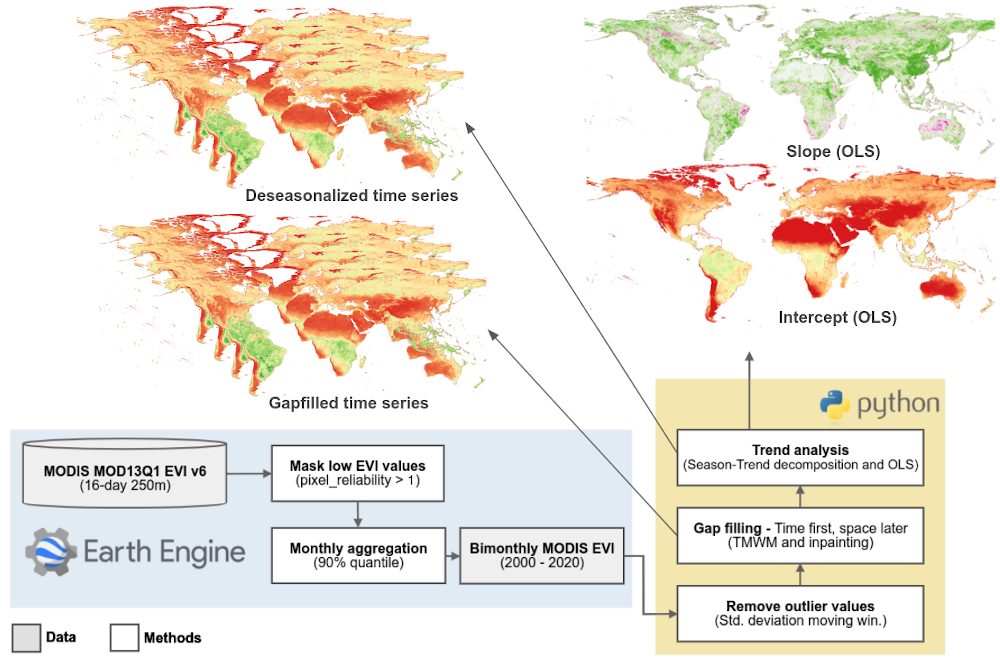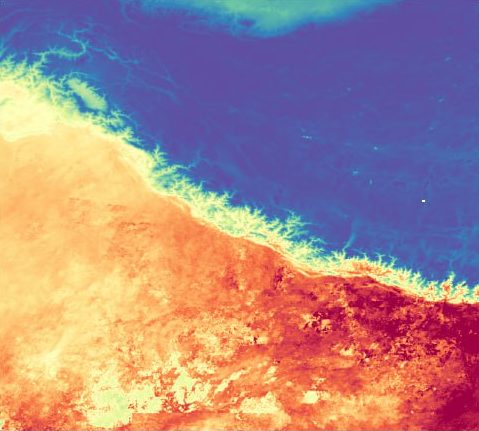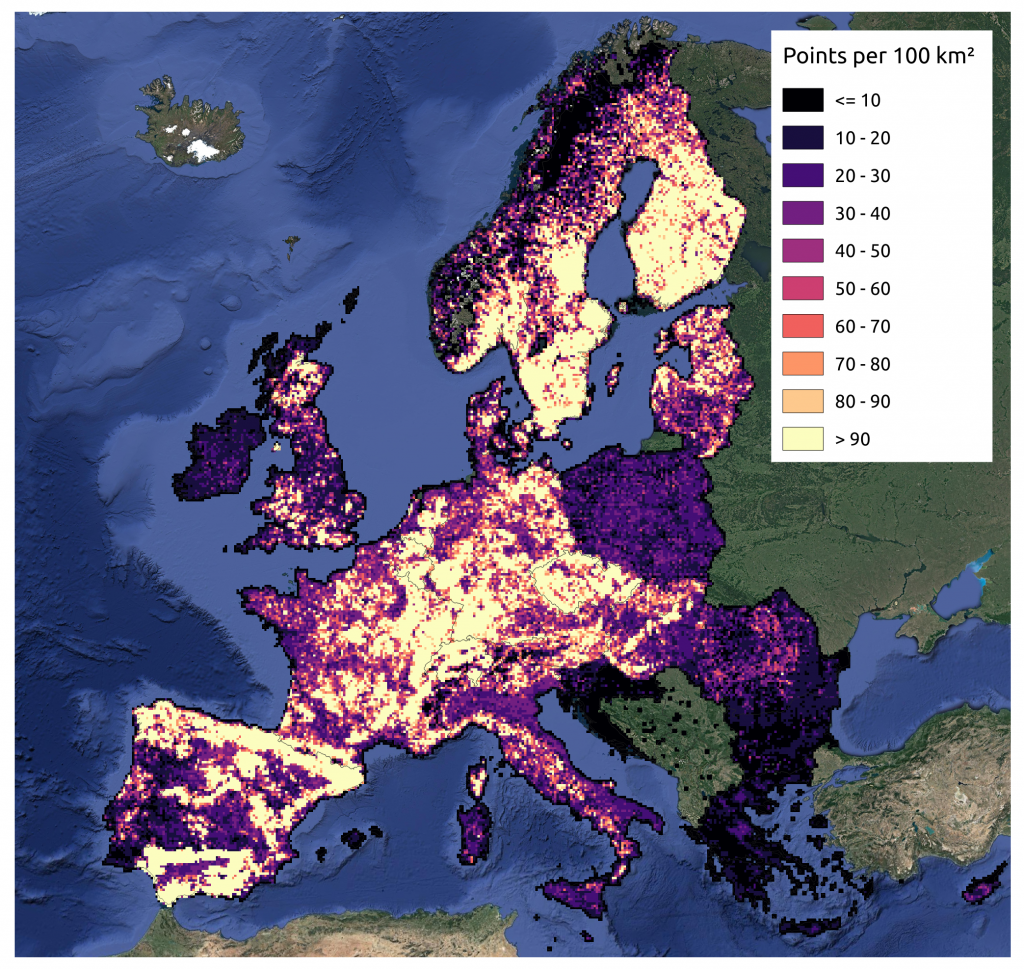the Global Vegetation Trends product generated by OpenGeoHub, which consists in a bi-monthly vegetation index time series (MOD13Q1.006 EVI) without clouds, gapfilled and analysis ready. The clouds and cloud shadows were removed using as reference the pixel reliability band (pixel values > 1). The remained artifacts were screened by a moving window approach able to identify outliers based on local median and standard deviation values, and the gaps were filled using a time-first (TMWM) space-later (InPainting) approach. The gapfilled VI time series were deseasonalized by the STL algorithm, producing a VI trend time series which were analyzed a OLS regression to derive several long-term temporal metrics on a pixel basis (alpha, beta, P>|t|, rsqr). This entire dataset is publicly available through Cloud Optimized GeoTIFF (COG), allowing easy and direct access by different GIS softwares (QGIS) and programming languages (Python and R). The COG format takes advantage of the very flexible and time-proven (Geo)TIFF image format to enable fast reading of large raster files, especially in a cloud hosted environments. The specification does several things to achieve this:
- it uses efficient compression (deflate), in terms of balancing compression ratio and decompression speedblocks are efficiently organized into tiles (e.g. 1024x1024 pixels) - overviews are built for several zoom levels to speed up resampling into lower resolutions
from functions.access import *
from pathlib import Path
import os
import warnings
warnings.filterwarnings('ignore')



